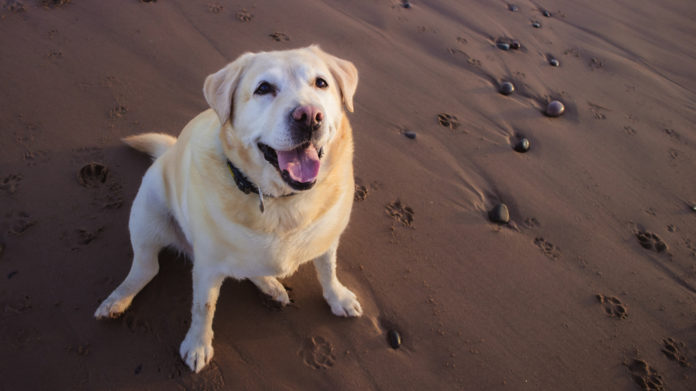6 dog breeds prone to obesity

Certain dogs have a predisposition to being chubby — but that doesn’t mean it’s a given.
One of the frequent myths perpetuated around canine obesity is that some dog breeds are just chubby and there’s no way to prevent obesity for those dogs.
While there are conditions that slow pups’ metabolisms down and there are breeds with naturally slower metabolisms and lower energy levels, there is no specific dog breed where canine obesity has to be an inevitability.
Here’s a list of the most commonly overweight dog breeds with a few helpful tips for each to prevent canine obesity.
Labrador retrievers
With a well-earned reputation for being voracious, Labrador retrievers are often listed as one of the fattest dog breeds. Their appetites are nearly impossible to satisfy and they will eat almost anything. Compounded with their high intelligence, labs are expert dumpster divers, table scrap scavengers, and dinner plate lickers.
Keeping a lab fit means no free-feeding, limiting treats outside of meal times, and safeguarding your trashcans and leftovers.
Luckily, labs are a higher energy breed, meaning exercising your pup is the easy part. Labs love walks and jogs, active play-time, and swimming. They need more exercise than short walks outside to use the bathroom. It’s better to prioritize longer, more strenuous walks or jogs, or set up quality backyard time playing fetch or tug-o-war to keep your lab fit and healthy.
Bulldogs and pugs
Bulldogs and pugs are both known to be heftier breeds – stocky and short. Both also tend to be overweight for the same reasons: lower energy, sinus issues or asthma and many dog owners don’t know how to tell when either of these breeds are overweight.
First off, bulldogs and pugs are by nature not very athletic. However, that doesn’t mean they can’t benefit from a healthy exercise regimen. For both breeds, endurance is key. Rather than runs, take your pug or bulldog on longer, leisurely walks on even, flat ground. Swimming is also a great option as long as you carefully watch your dog and make sure to stay in shallow water. You can also try short, moderately active bursts of play indoors.
For both breeds, obesity is difficult to spot visually. Both are barrel-chested and stocky, forgoing the hourglass figure many other dog breeds have.
One cue you can use is your dog’s waist. Both breeds have visible tucks in at their waist when they’re at ideal weights.
You can also check by feel, using two fingers to gently pet along your pup’s ribcage. If you can feel the ridges of his ribs, he’s likely an ideal weight. However, it’s important to note that while it is healthy to be able to feel a pug or a bulldog’s ribs, it is not healthy to be able to see them. That could mean he’s actually underweight.
Basset hounds and beagles
Both hounds, bassets and beagles are active by nature. Basset hounds are intelligent, social, and friendly, making them great family dogs. Similarly, beagles are great trackers, with upbeat personalities. Both also have incredible appetites.
Beagles, bassets, and most hounds can be kept in shape by working. Hounds are often used to track and fetch professionally, but even family dogs can use their natural skillsets around the yard or park.
Keep your hounds active by hiding treats around the yard for them to sniff out or invest in a puzzle toy for them to solve before mealtime. Low impact exercise, especially for basset hounds, is important as the breed often develops back problems and arthritis later in life.
Dachshunds
This low-to-the-ground, lovable breed is more prone to obesity than most dog breeds, largely because they have such a high likelihood of developing back issues which prevent them from exercising.
According to the UK’s Royal Veterinary College, 1 in 4 dachshunds develop an intervertebral disc disorder or disease during their lifetime. Because of this, it’s important to avoid rigorous exercise and ensure to limit your dachshund jumping or climbing.
Instead, you can ensure your wiener dog stays fit with short runs and games of fetch. Dachshunds love a good chase so bounding around a yard or park should be no issue.
General tips
For almost every dog, preventing obesity comes down to diet and exercise. While not every pet can adhere to the same exercise routines, most can benefit from specific food rules:
- Stop free-feeding and create a regular schedule for meal times.
- Doggy proof trash cans and pantries.
- Avoid feeding table scraps and any starchy human foods.
- Limit treats to healthy, palatable snacks like blueberries or carrots instead of dog biscuits or cookies.




